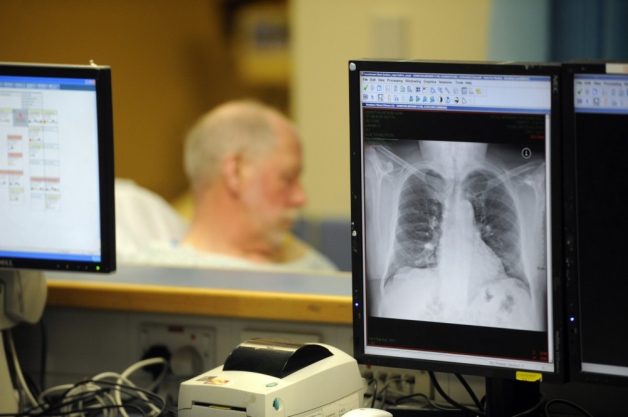Home
About Us
If you've ever wished you could visit a doctor in person, you're in luck: There's now a virtual-first-care system that could save you thousands of dollars, according to a study published in the American Journal of Internal Medicine.
The study found that patients who used a virtual-first-care system were less likely to end up in the ER than those who went to a doctor face-to-face, the New York Times reports.
The study also found that patients who used a virtual-first-care system were less likely to be admitted to the ER than those who went to a doctor face-to-face.
The study's lead author, Dr. Supat Thammasitboon, tells the Times that the virtual-first-care system has the potential to save thousands of dollars per year by reducing the need for expensive in-person visits, as well as improving access to care and reducing health care costs.
"It's a game-changer," Thammasitboon says.
"It's going to save a lot of money."
According to the Digital Medicine Society, the virtual-first-care system is expected to be worth $79.9 billion by 2032, making it a "significant shift
Selected Grant News Headlines
A customized collection of grant news from foundations and the federal government from around the Web.
Inaugural cohort of Global Futures Impact Scholars receive mentorship and up to $5,000 to fund a student-led experience.Students divided into four teams to work on smaller projects that help them...more
The One Earth Summit was held in Hong Kong on March 28.The theme was 'Driving systemic change towards a sustainable future through impact investment and technological innovation' It attracted over...more
Allianz scraps nuclear, military exclusions to back Europe's rearmament drive.Germany's Allianz Global Investors has dropped two exclusions blocking its sustainable funds from investing in defence.It...more
Wendy Freedman, the John and Marion Sullivan University Professor in Astronomy and Astrophysics and the College, received the National Medal of Science.She also led the initiative to build the Giant...more
Press Release: The Community Foundation of Singapore Ushers in a New Era of Philanthropy.Community Foundation Of Singapore marks a new chapter with the launch of a refreshed brand identity, a renewed...more
The Community Foundation of Singapore (CFS) has appointed Mr Paul Tan as Chief Executive Officer, effective 1 April 2025.Outgoing CEO Ms Catherine Loh steps down after 13 years of dedicated...more
Employees can organize giving campaigns or drives, such as collecting diapers, nonperishable food, or personal hygiene products.Employers can also set up a payroll system allowing employees to have...more
Debra Vasilopoulos was surprised with the 2025 Town of Palm Beach United Way Distinguished Citizen Award.The award is the highest honor given by the organization and recognizes individuals who embody...more
The Project Fibonacci Foundation is a dynamic organization dedicated to transforming education and opening doors to innovative opportunities for young minds.By investing in inspiring speakers,...more
Reina Shukl pioneers advanced wellness solutions such as cryotherapy and infrared therapy to enhance recovery, performance, and overall well-being.Shivangi Desai is a leading health and nutrition...more
Philanthropy News from...
Community Foundation for Southeast Michigan
North Valley Community Foundation
National Philanthropic Trust
Schwab Charitable
Community Foundation of Grundy County
Broomfield Community Foundation
Tulsa Community Foundation
Parasol Tahoe Community Foundation
Community Foundation of Northwest Mississippi
Hewlett Foundation
Social Entrepreneurship
Spotlight
Social Enterprises: Key to Enhancing a Nation’s Health

Glasgow Caledonian University (GCU) has launched a series of noteworthy research projects to learn if social enterprises can help Scotland lose its “sick man of Europe” label and boost the nation’s overall health.











